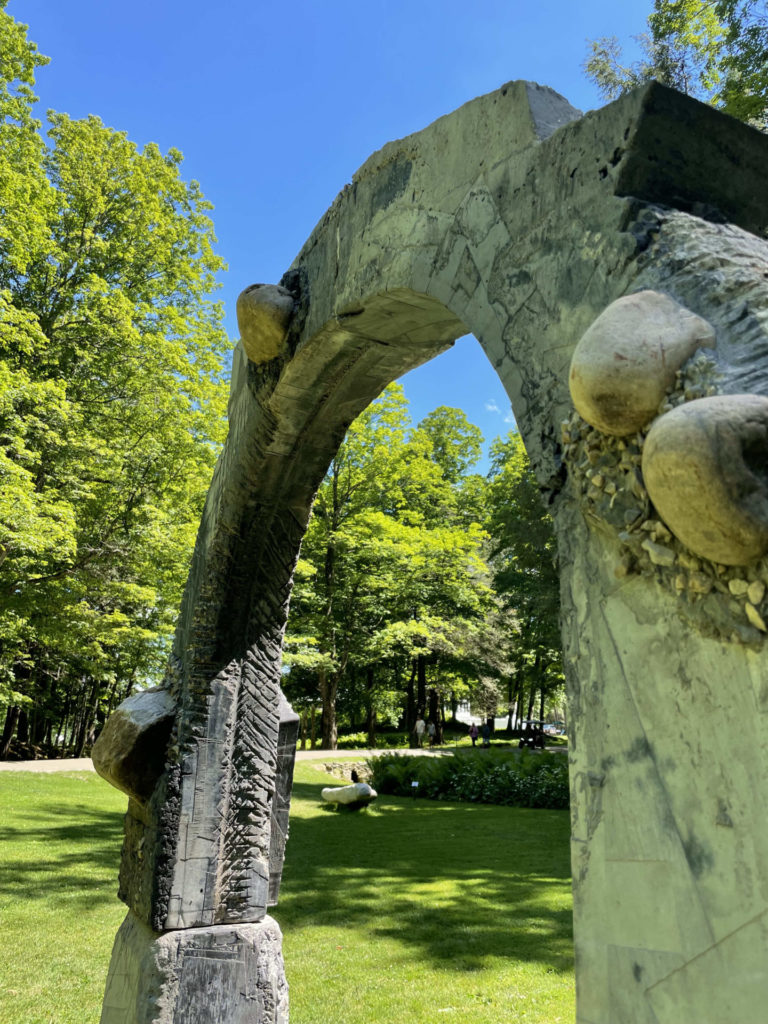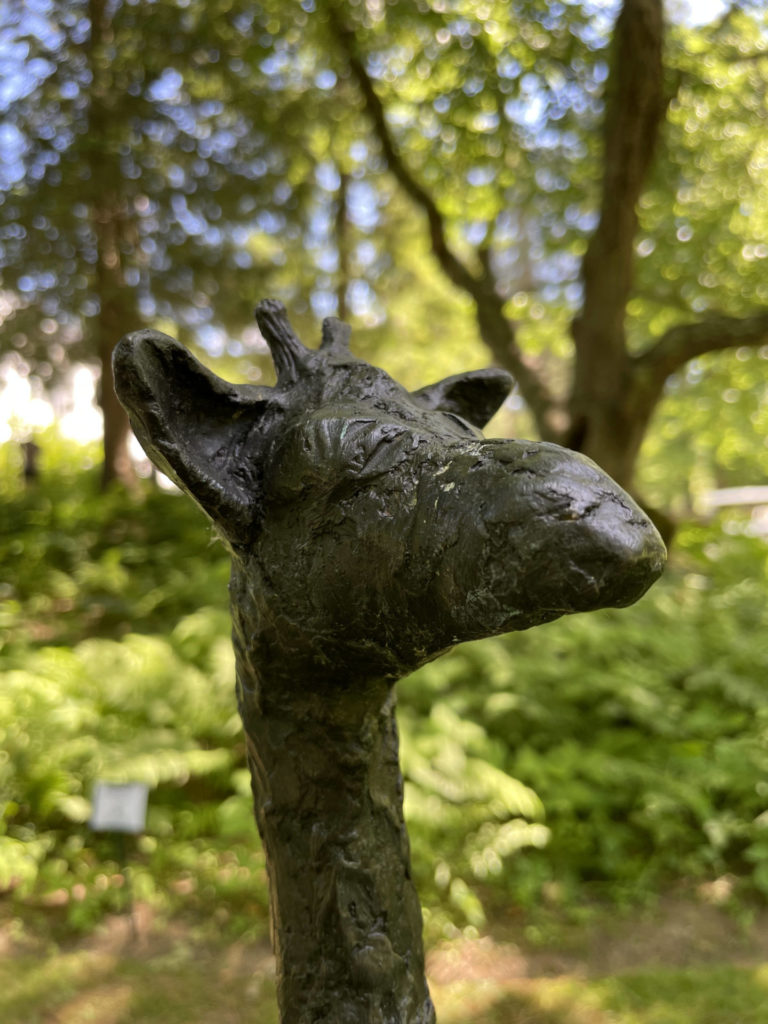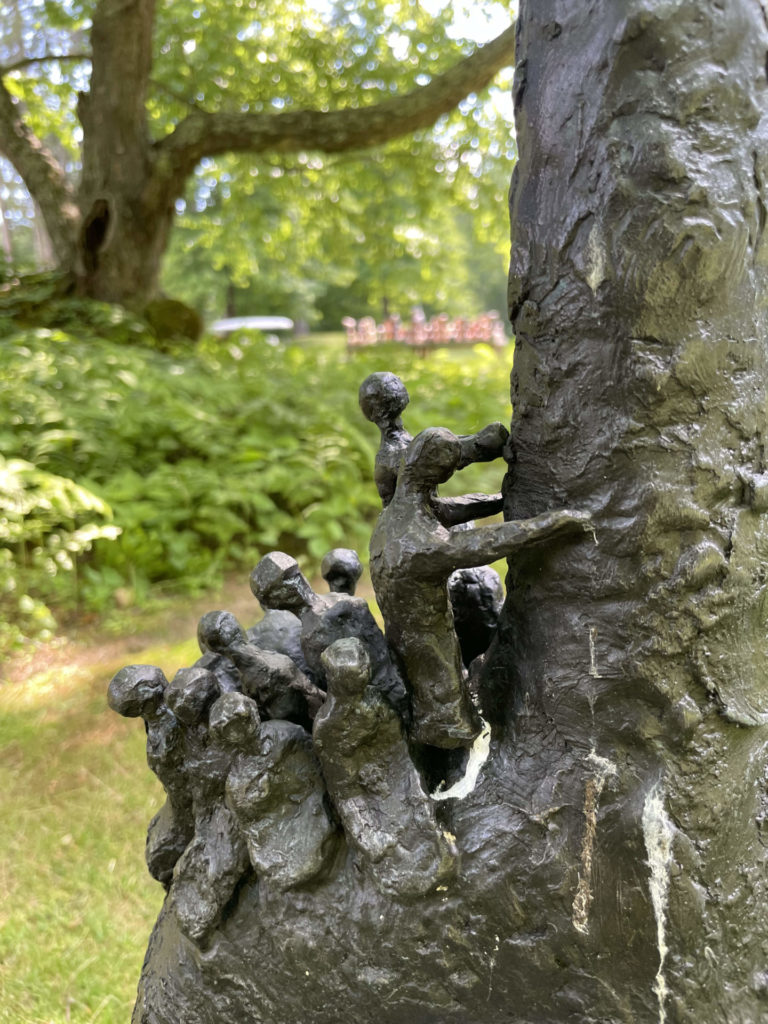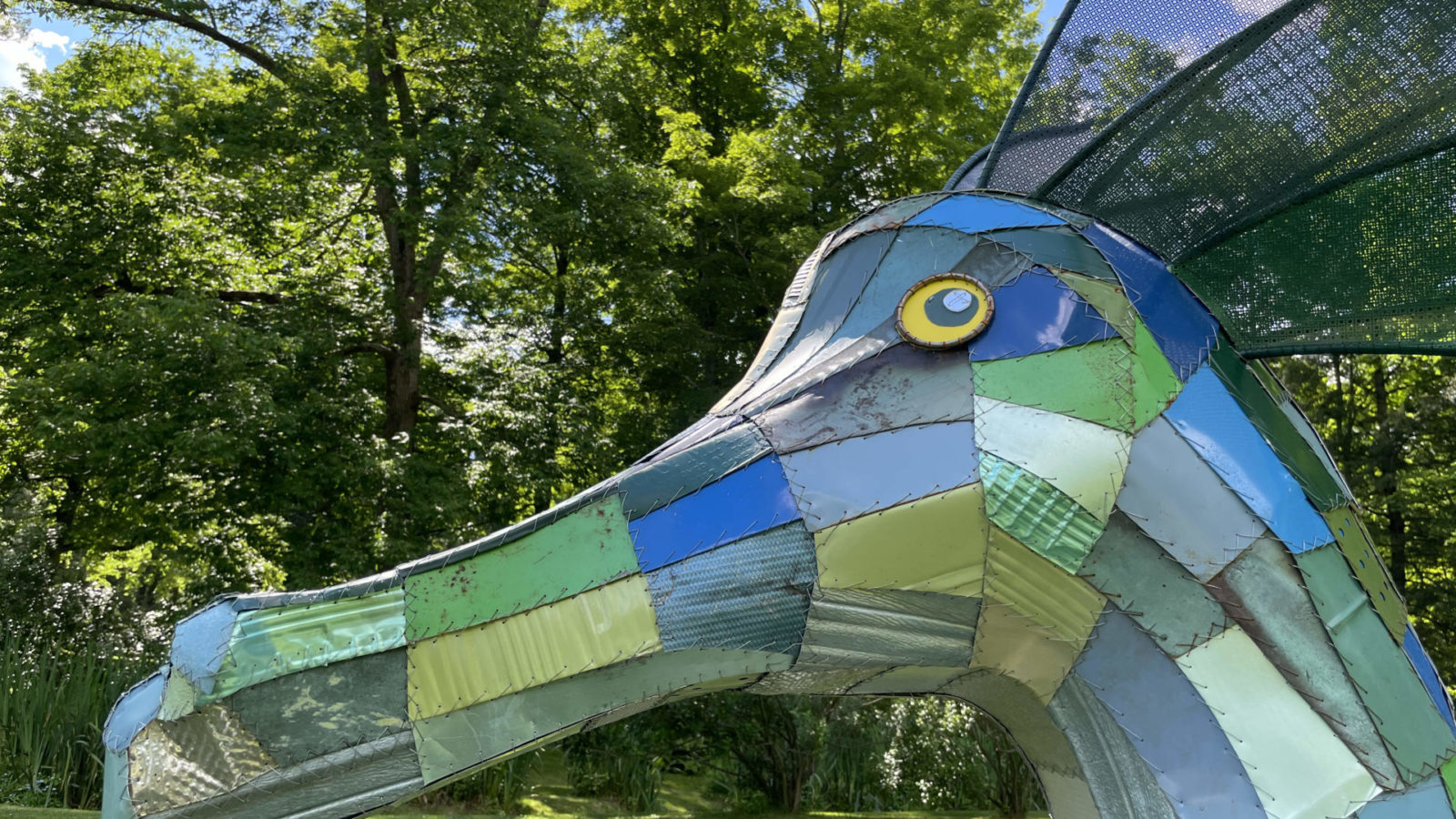The sea serpent in the garden is unmistakeable — rippling vintage translucent blue. I wonder what Edith Wharton would have said to a creature as long and sleek as a sailing canoe who came up for air by her back steps.
I’m drifting across her lawn on a Friday afternoon. It’s full-pelt summer now, but this afternoon the sun is out and I have a couple of hours to be here, eye to eye with a water dragon. She arcs as though she’s swimming through the earth, and she’s looking at the dolphin fountain with a quizzical eye.
Her name is Cecelia, says sculptor Robin Tost (in her artist thoughts). When Covid isolated Tost in her studio, she decided to take on a large work, and she has taken two years to piece her sea serpent together. Cecelia takes the weathered and reflective blue shades of her skin from scraps of metal — license plates, a map of Becket, part of a “squashed mailbox.”




I’m here wandering through the new Sculpture Now show, and Scarlet and I are meeting to walk through the house, to see the new exhibit on Wharton’s years in France and her newly restored private rooms on the top floor. Here, among the bed where she wrote in the mornings, her desk and her claw-foot bathtub, the Mount gives a sense of her intimate life, her closest friends, her troubled marriage.
The rooms also follow the life of her house after she left it. One panel shows Shakespeare & Company actors when the company lived here in the 1970s — all the founding actors in their 20s — when they performed Midsummer Night’s Dream in the lime trees and the Tempest on the terrace.
Wharton might have enjoyed the energy of an acting company on the lawn, I think, or cast bronze and ceramics and the long table set with the knobs of old balusters, like pawns in a mammoth chess game.
Scarlet and I stand in the garden talking her stories, about the Age of Innocence and Ellen Olenska, a woman Wharton writes as familiar and fearless — a woman who asked disconcerting questions, danced with a Spanish shawl and sang Neapolitan love songs to guitar, drew from models and played piano.
Wharton has always seemed to me to long for that kind of passion and playfulness and sensuality, in her writing and in her life. While the narrator of AoI lives in cluttered and shuttered drawing rooms, Ellen transforms an old house on a cobbled street into something intimate … a room like none he had ever known before, with tables of dark wood, red damask on the wall and a slender bronze.
Out here Wharton’s gardens, in the ferns and along the old road, I’m drawn to natural matter too, wood and stone, clay and bronze, and organic forms. A mountain lion tenses at the edge of the woods. A garden of rib bones open like dry fans, like desert plants, near the cemetery.
In her artist statement about these sculptures of bone, Miller Opie talks about cycles of nature, the deer nurturing the woods and the woods nurturing the deer. I sit in the grass in the shade beside them, watching a slight grey bird move across the grass a few feet away, and I think of Eve in the garden, when the trees were flowering and she knew the animals by name.


A smooth bronze curve turns out to be homage to another woman of depth. Martina Angela Müller is invoking Nike, a Greek spirit, though she seems earlier than Greek mythology — she is a river goddess, daughter of the sea (the titans Oceanus and Tethys). She holds courage, protection, music. And she has wings. Odd that I’ve never wondered before why she can fly, and how, and where. How would wings feel on a blue-sky day like this?
Wharton would have known this story. She would likely have known the sculpture of Nike at Samothrace that Müller is remembering here. Wharton would have known the alternate and overlapping stories of Nike’s strength. Like Newland Archer in AoI, she knew her bronzes. I can see him walking through the Tuileries, standing before a Titan and thinking my live has been too starved — right before he turns away from love for the last time.
And did she, too? We’re talking about her lifelong friendship with Walter Berry, the man she is buried beside now, in France. I wonder what she would think of Nike at her front door in abstract bronze.
The new exhibit folds in Wharton’s gardens in France and her work during World War I, when she was driving to the front in her own car (somehow not commandeered for the war effort) and visiting field hospitals — even standing in a trench, looking across No Man’s Land.
I wonder what she would say to a woman who drove her own chariot and walked onto battlefields. Maybe they would bicycle around Laurel Lake together … get lawn tickets to Tanglewood for the opening weekend and listen to Nicole Cabell and Leonard Bernstein’s setting of Hebrew prayer and Stravinsky’s Rite of Spring.

